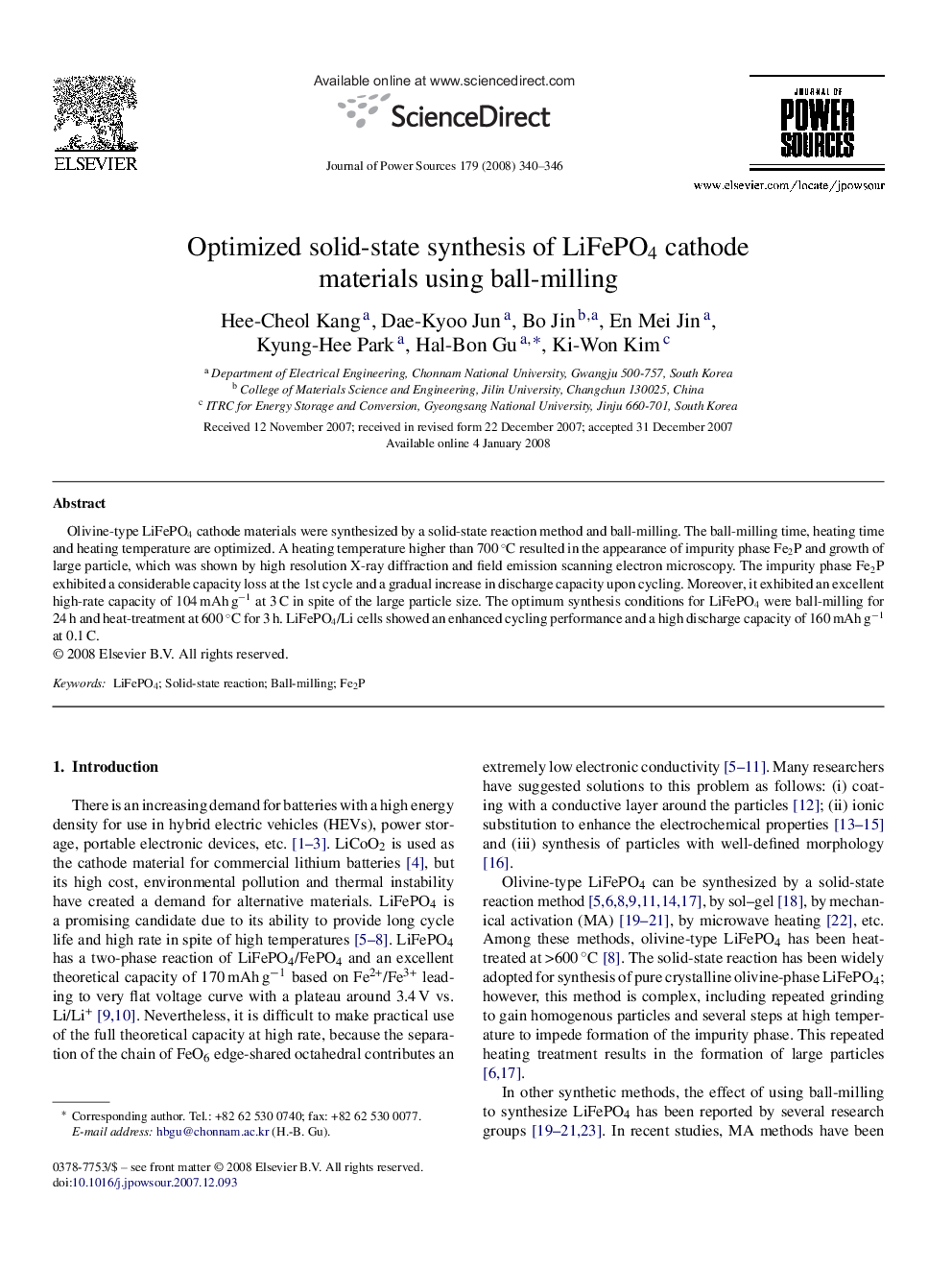| Article ID | Journal | Published Year | Pages | File Type |
|---|---|---|---|---|
| 1291441 | Journal of Power Sources | 2008 | 7 Pages |
Olivine-type LiFePO4 cathode materials were synthesized by a solid-state reaction method and ball-milling. The ball-milling time, heating time and heating temperature are optimized. A heating temperature higher than 700 °C resulted in the appearance of impurity phase Fe2P and growth of large particle, which was shown by high resolution X-ray diffraction and field emission scanning electron microscopy. The impurity phase Fe2P exhibited a considerable capacity loss at the 1st cycle and a gradual increase in discharge capacity upon cycling. Moreover, it exhibited an excellent high-rate capacity of 104 mAh g−1 at 3 C in spite of the large particle size. The optimum synthesis conditions for LiFePO4 were ball-milling for 24 h and heat-treatment at 600 °C for 3 h. LiFePO4/Li cells showed an enhanced cycling performance and a high discharge capacity of 160 mAh g−1 at 0.1 C.
